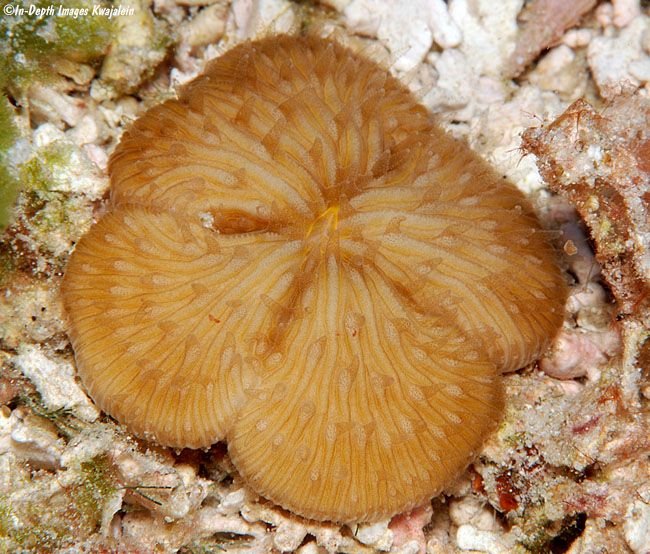
These very small and relatively thin fungiids are abundant in some lagoon slope Halimeda patches. Their irregular growths break apart easily and apparently naturally, since we see many of the corals broken into segments in areas where it is not expected they would be disturbed. The World Register of Marine Species lists these in the genus Cycloseris (apparently based on molecular data), but we are currently following the Corals of the World website, which claims there are morphological differences between the two genera.

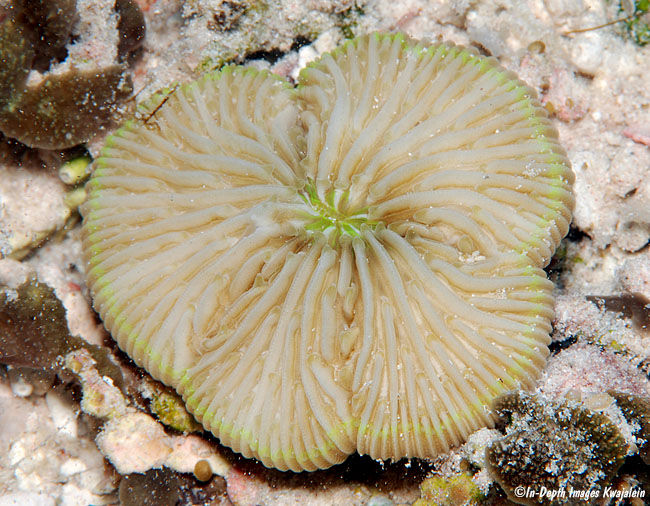

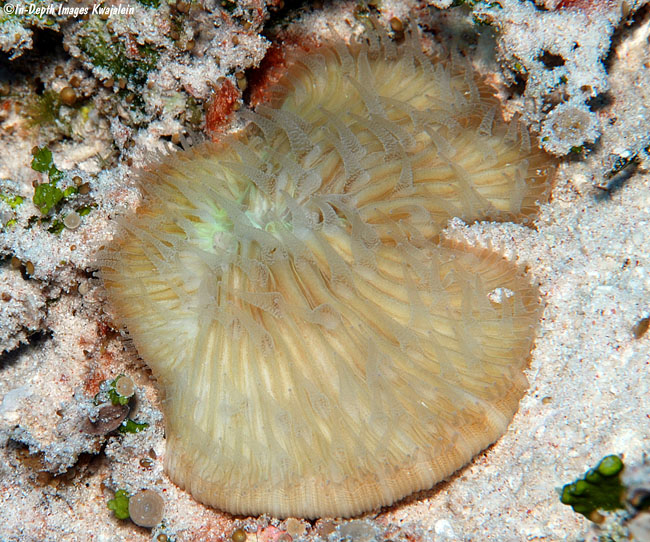
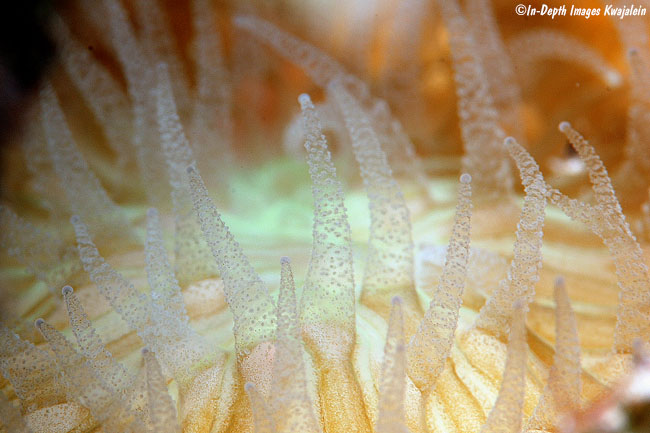
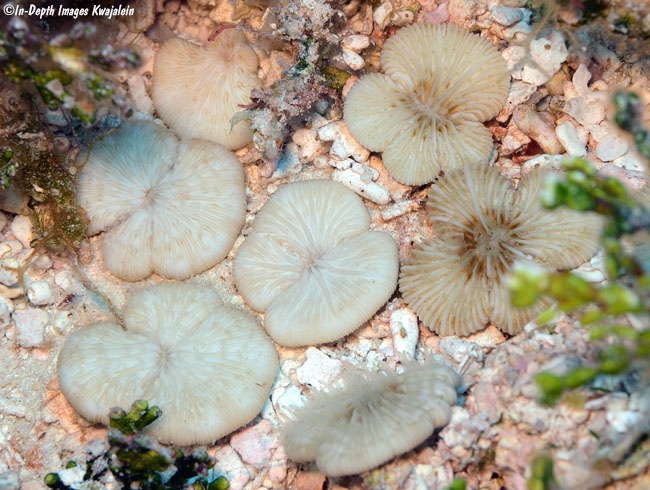



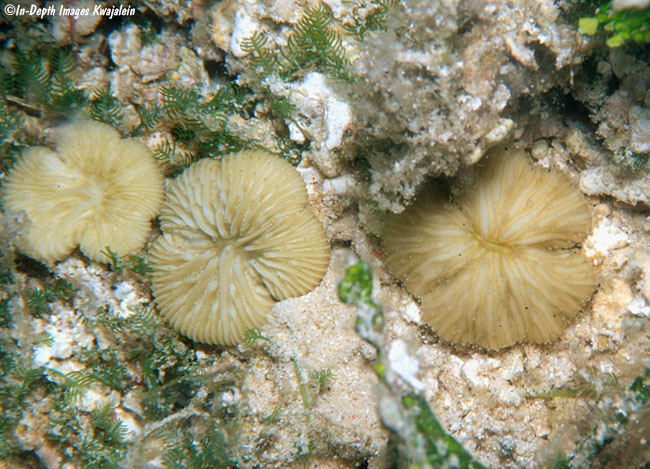
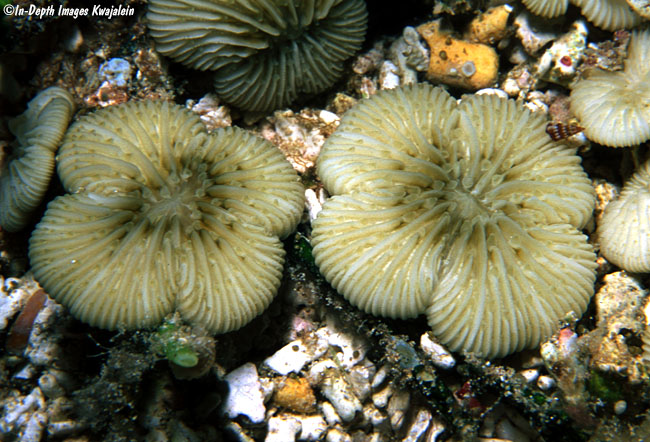
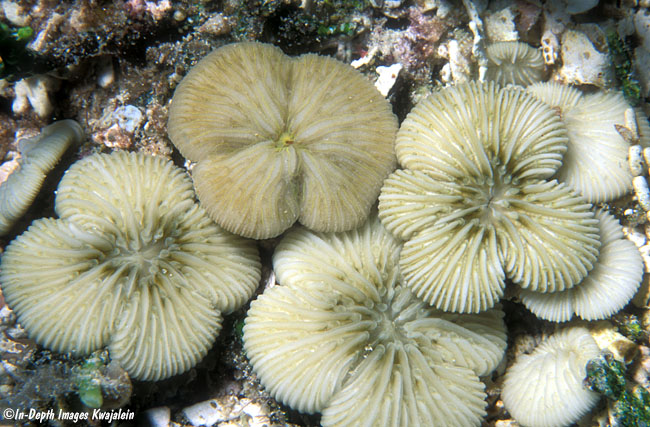

Like some of the other Fungiid species, scattered among the normal light to brown colored polyps are some with an orange glow. What is unusual about this is that water filters out orange light from sunlight shallower than about 25 feet depth (~8m). Deeper than that, you should not see orange, yet some of these corals glow distinctly orange at least as deep as 30m (100' or so) and no doubt deeper. What happens here is the coral tissue absorbs what sunlight there is, which at 20m that would be mostly shades of blue and other short wavelengths of light. Then the tissue re-emits the light at a longer, orange wavelength. If you bring your own light down, either a flashlight ("torch" if you're not from the US) or a camera flash unit, the artificial light washes out the rather feeble orange glow, usually making the coral look a dull beige or brown. The photo below was taken without lights, just using available light from the sun.
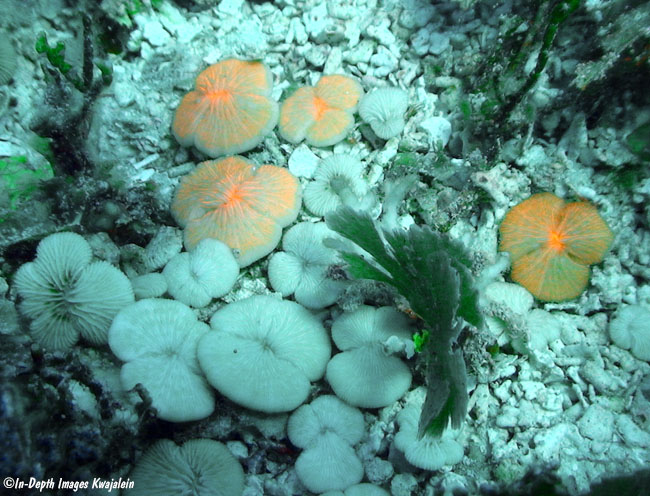
Created 10 April 2020